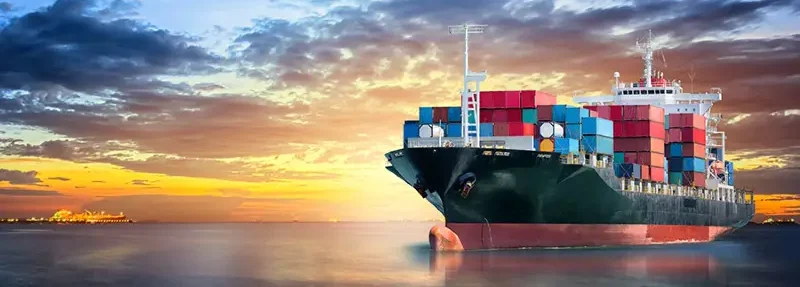Success is in the air — Exporter Magazine

Aeroqual is a quiet achiever on the export front; but, as Exporter discovered when it went to see its VP business development and marketing Carl Beck, the company’s achievements are truly worth celebrating.Tucked away in a side street off Mt Eden’s Dominion Road, you’ll find the rather understated office and manufacturing facility of Aeroqual Limited – a company that over its 12 year lifespan has placed a high priority on R&D and building export sales.Aeroqual was founded in 2001 by Professor David Williams and Dr Geoff Henshaw, a pair of Kiwis who had been based in the UK heading a group of scientists in the development of a new gas sensitive semiconductor technology.They started the business back home in New Zealand in order to commercialise the sensor technology. With a number of successes already under his belt, Henshaw had a real appetite for commercialising technology and attracting overseas scientists back to New Zealand to work in the company.Aeroqual’s offering was based around its reliable, accurate and affordable ozone sensor. The company’s depth of expertise in ozone measurement led it to develop two distinct product lines targeting a) indoor and industrial health and safety (both handheld and fixed wall monitors), and b) outdoor (environmental) air quality monitoring stations.Ozone is used extensively in industrial applications, explains Carl Beck, Aeroqual’s VP business development and marketing. “It attacks bacteria, so it’s used in food treatment, storage, sterilisation and medical applications, commercial laundries, wastewater treatment, and so on.“Ozone generators are now a mature technology, and there are many health and safety aspects surrounding ozone production.“Today our brand is synonymous with this low cost, high-performance ozone sensor that has applications in both the industrial and outdoor fields,” he says.In the environmental space the AQM60 air quality monitoring station is Aeroqual’s flagship product. It is used by governments, air quality regulators and industrial companies worldwide to measure and manage common air pollutants, and/or measure various weather parameters such as temperature, humidity and rainfall.Customers like the low-cost sensor technology built into the AQM60. It is one third the price of the more expensive ‘laboratory’-grade ‘reference’ equipment prevalent in Western nations – not to mention smaller and lighter – and within a few percent in terms of performance levels. Therefore Aeroqual is pitching the AQM60 at developing countries that have air pollution problems and have yet to build their air quality monitoring infrastructure – the likes of Asia, India, the Middle East and Latin America.Beck says being based in politically neutral New Zealand can be an advantage when targeting parts of the world that are less positively disposed towards the US and, to a lesser extent, Europe.Aeroqual exports to more than 50 countries, serving the end customer through a channel comprised of partner distributors and resellers. Many AQMs are sold with a two-year support package covering calibration and servicing. Beck says they get a lot of sales enquiries online, as well as expressions of interest from potential distributors.To date the company’s most notable export project has been the extension of Dubai’s air quality monitoring network. The project completed sign-off recently but at the time of writing details were still under wraps.Beck says the project nature of the company’s outdoor environmental sales can make cashflow quite ‘lumpy’; but fortunately this is offset by the indoor/industrial sales which are higher volume, lower unit-price by nature.
New management, new emphasis
In 2012 Aeroqual underwent a change of management. Incoming CEO Mark Templeton brought a strong marketing focus to the table – and this was backed up by Beck’s business development and marketing background.“There was also a change in the shareholder structure, and we now have a platform to move the company forward,” says Beck.With the management change came a new emphasis on internal support processes and systems, in particular quality, and Beck says Aeroqual is on track to achieve ISO quality management certification this year. They are also locally outsourcing parts and production that’s not adding value, to better cope with sales peaks and troughs – and, at the same time, building in more scalability to their sensor production.Externally, Beck says 2013 is about bedding down their existing relationships and putting formal agreements in place with key distributors “to maintain a common sales and marketing plan”.He says the goal is to sell more units and capture more value with each sale. “At the moment we’re a sensor technology company, and we package that technology into instruments – which is where we make our money.”Building their marketing capability is key to growth. “We have some excellent channel partners. We aim to increase our level of support to them and provide the confidence to invest in our products more,” says Beck.Looking ahead, Beck says the biggest sales potential is in the outdoor space and this where they’re investing the bulk of their energies and money. “We’re confident we can displace the incumbent ‘reference’ equipment that’s in the marketplace. That market alone is worth $1.1 billion per annum globally. If we can get just a small slice we’ll become a very big company.“Our five year plan is to be a $10 million organisation, which is achievable. Currently turnover is around $3.5 million.”To get there, Beck says they’re becoming more proactive with NZTE, engaging with their business development people on the ground in key markets. Aeroqual also has a good relationship with the Middle East Business Council – which has proved fruitful – and there has been support from Auckland University and MBIE in developing the technology.Not surprisingly the exchange rate has been a challenge. Beck says they’ve had to drop their US dollar prices to stay competitive with US manufacturers, but they manage by building a sufficient buffer into their margins. The US/Kiwi exchange rate has also meant they’ve had to drop their online retail prices in the local market for their industrial handheld products. Internet transparency continues to impact local exporters like Aeroqual, he says.The key to success for technology-based export manufacturers such as Aeroqual is to find solid partners on the ground in-market, Beck adds. “We would never have grown into anything of significance just relying on our home market, so right from the start we had to go overseas.”Glenn Baker is editor of Exporter.
A veteran’s viewpoint
Paul Pickering has been with Aeroqual for eight years and is responsible for sales to Europe, the Middle East and Africa – in localities as diverse as Kazakhstan, Nigeria and the tiny West African nation of Burkina Faso. He does a gruelling circuit twice a year and has notched up many interesting sales and tales. In the black townships of South Africa, for example, where employers are required to employ and empower the local community, the AQM60 stations have proven popular, not just for their low price, but for their suitability for training locals to operate them. Pickering says the compact AQM60 is also in demand by South Africa’s municipalities and provincial networks, and young black people are being encouraged into government departments to upskill around the latest technologies – Aeroqual’s system is one of them.Export opportunities are everywhere for a neutral country like New Zealand he says – Iran especially.
Turkey will also provide a lucrative market in upcoming years, predicts Pickering. “2023 is their centenary of independence, and that’s when they will acquire full control of the Bosphorus and Marmara oil and gas fields. Turkey has EU aspirations; is rapidly redeveloping its capital city Istanbul to make it quake-proof; and is fast becoming an industrial powerhouse. With our cultural connections through the ANZACs, this all bodes well for New Zealand exporters,” he says.
Publishing Information
Magazine Issue
Exporter Magazine July/Aug 2013 issue 29







